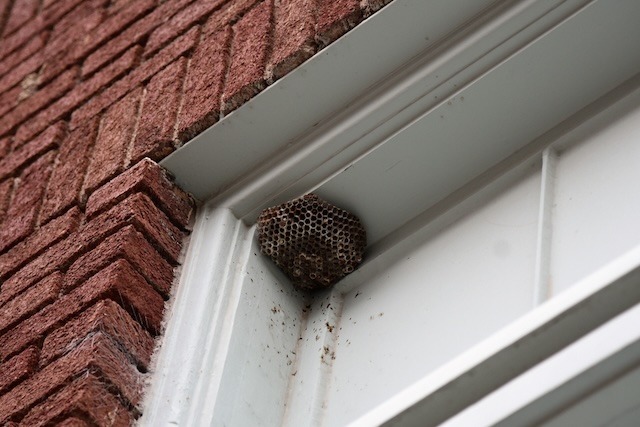Even though it’s warm outside in the summer, wasps can quickly make leisurely activities into careful ones. The first step in getting rid of these buzzing pests is to know where most wasp nests are. Getting rid of wasp nests in a smart way, whether they are hidden or hung out in the open, makes sure that the area is safe and fun for everyone.
1. Eaves and Overhangs: The Home in the Sky
Locating: Wasp nests usually hide under eaves, overhangs, or any flat surface that is safe.
How to Talk to:
Professional Inspection: Because they are often high up and hard to get to, it is best to have a professional check and remove them.
Preventive Steps: Wasps won’t be able to build nests if you regularly check for and seal any possible entry spots.
2. Shrubs and trees: Nature’s Masks
Location: Wasp nests naturally hide in trees and bushes, especially ones that are made in branches or in the leaves.
How to Talk to:
Trimming and Pruning: Regularly cut back trees and leaves to make it harder for birds to build nests.
Early Detection: Look out for signs that a nest is being built and take care of them right away.
3. Wall holes: hiding places for stealth
Location: Wasps often use cracks in walls to make nests that stay hidden until they are found.
How to Talk to:
Professional Knowledge: Getting rid of things from wall spaces needs professional knowledge to keep the structure from getting damaged and to make sure the job is done completely.
Sealing Entry Points: Once the pests are gone, seal the entry points to keep them from coming back.
4. Underground Nests: Safe Places Below Ground
Location: Some types of wasps, like yellow jackets, dig homes underground, usually in old mouse holes that have been left empty.
How to Talk to:
Professional Removal: Because of the risk of violent behaviour, dealing with underground nests needs to be done by a professional.
Landscaping Awareness: Be careful not to upset hidden nests when you’re landscaping.
5. Spaces on the roof and attics: Warm Colonies Inside
Location: Wasp nests can be found in attics and roof places, which are warm and safe.
How to Talk to:
Professional Evaluation: Professionals can figure out how bad the invasion is, get rid of the nests, and fix any damage that might have happened to the building.
Preventive Steps: Wasps can’t get into your home if you seal up any holes or gaps in the roof.
6. Window sills and shutters: Being close to people
It is known that wasps build their nests in and around windows, especially in the safety of shutters.
How to Talk to:
Careful Removal: Be careful when taking down nests that are close to windows. For nests in hard-to-reach places, it’s best to get professional help.
Sealing Gaps: To keep wasps from getting to possible nesting places, seal gaps in window frames.
7. Garages and sheds: Safe havens made by people
Location: Garages, sheds, and other areas can be good places for wasps to hide.
How to Talk to:
Thorough Inspection: Check these buildings often, mainly in the spring and early summer.
Professional Help: If you need to safely and effectively remove a nest that is in a hard-to-reach place, you should get professional help.
In conclusion, knowing where wasp nests usually are is important for good management. Some nests are easy to deal with on your own, while others need to be taken care of by a professional. Strategic intervention keeps wasps out, whether they are high up in the eaves or hidden in wall cavities. This way, the summer won’t be ruined by annoying buzzing guests.
